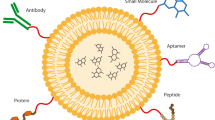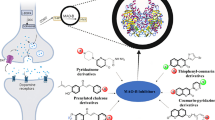Abstract
The blood–brain barrier (BBB) permeability of molecules needs to meet stringent requirements of Lipinski’s rule, which pose a difficulty for the rational design of efficient chelating agents for Parkinson's disease chelation therapy. Therefore, the iron chelators employed N-aliphatic alcohols modification of deferiprone were reasonably designed in this work. The chelators not only meet Lipinski’s rule for BBB permeability, but also ensure the iron affinity. The results of solution thermodynamics demonstrated that the pFe3+ value of N-hydroxyalkyl substituted deferiprone is between 19.20 and 19.36, which is comparable to that of clinical deferiprone. The results of 2,2-diphenyl-1-picrylhydrazyl radical scavenging assays indicated that the N-hydroxyalkyl substituted deferiprone also possesses similar radical scavenging ability in comparison to deferiprone. Meanwhile, the Cell Counting Kit-8 assays of neuron-like rat pheochromocytoma cell-line demonstrated that the N-hydroxyalkyl substituted deferiprone exhibits extremely low cytotoxicity and excellent H2O2-induced oxidative stress protection effect. These results indicated that N-hydroxyalkyl substituted deferiprone has potential application prospects as chelating agents for Parkinson's disease chelation therapy strategy.
Graphic abstract











Similar content being viewed by others
References
Zecca L, Youdim MB, Riederer P, Connor JR, Crichton RR (2004) Iron, brain ageing and neurodegenerative disorders. Nat Rev Neurosci 5(11):863–873. https://doi.org/10.1038/nrn1537
Barnham KJ, Masters CL, Bush AI (2004) Neurodegenerative diseases and oxidative stress. Nat Rev Drug Discov 3(3):205–214. https://doi.org/10.1038/nrd1330
Berg D, Gerlach M, Youdim MBH, Double KL, Zecca L, Riederer P, Becker G (2001) Brain iron pathways and their relevance to Parkinson’s disease. J Neurochem 79(2):225–236. https://doi.org/10.1046/j.1471-4159.2001.00608.x
Sun Y, Pham AN, Waite TD (2016) Elucidation of the interplay between Fe(II), Fe(III), and dopamine with relevance to iron solubilization and reactive oxygen species generation by catecholamines. J Neurochem 137(6):955–968. https://doi.org/10.1111/jnc.13615
Sun Y, Pham AN, Waite TD (2018) Mechanism underlying the effectiveness of deferiprone in alleviating Parkinson’s disease symptoms. ACS Chem Neurosci 9(5):1118–1127. https://doi.org/10.1021/acschemneuro.7b00478
Ward RJ, Dexter DT, Crichton RR (2015) Neurodegenerative diseases and therapeutic strategies using iron chelators. J Trace Elem Med Biol 31:267–273. https://doi.org/10.1016/j.jtemb.2014.12.012
Kaur D, Andersen JK (2002) Ironing out Parkinson’s disease: is therapeutic treatment with iron chelators a real possibility? Aging Cell 1(1):17–21. https://doi.org/10.1046/j.1474-9728.2002.00001.x
Boddaert N, Le Quan Sang KH, Rötig A, Leroy-Willig A, Gallet S, Brunelle F, Sidi D, Thalabard J-C, Munnich A, Cabantchik ZI (2007) Selective iron chelation in Friedreich ataxia: biologic and clinical implications. Blood 110(1):401–408. https://doi.org/10.1182/blood-2006-12-065433
Bolognin S, Drago D, Messori L, Zatta P (2009) Chelation therapy for neurodegenerative diseases. Med Res Rev 29(4):547–570. https://doi.org/10.1002/med.20148
Pardridge WM (2007) Blood–brain barrier delivery. Drug Discovery Today 12(1):54–61. https://doi.org/10.1016/j.drudis.2006.10.013
Tosato M, Marco VD (2019) Metal chelation therapy and Parkinson’s disease: a critical review on the thermodynamics of complex formation between relevant metal ions and promising or established drugs. Biomolecules 9(7):269. https://doi.org/10.3390/biom9070269
Lipinski CA, Lombardo F, Dominy BW, Feeney PJ (1997) Experimental and computational approaches to estimate solubility and permeability in drug discovery and development settings. Adv Drug Deliv Rev 23(1):3–25. https://doi.org/10.1016/S0169-409X(96)00423-1
Ghose AK, Viswanadhan VN, Wendoloski JJ (1999) A knowledge-based approach in designing combinatorial or medicinal chemistry libraries for drug discovery. 1. A qualitative and quantitative characterization of known drug databases. J Comb Chem 1(1):55–68. https://doi.org/10.1021/cc9800071
Pardridge WM (2001) Brain drug targeting: the future of brain drug development. Cambridge University Press, Cambridge
Martin-Bastida A, Ward RJ, Newbould R, Piccini P, Sharp D, Kabba C, Patel MC, Spino M, Connelly J, Tricta F, Crichton RR, Dexter DT (2017) Brain iron chelation by deferiprone in a phase 2 randomised double-blinded placebo controlled clinical trial in Parkinson’s disease. Sci Rep 7(1):1398. https://doi.org/10.1038/s41598-017-01402-2
Singh S, Epemolu RO, Dobbin PS, Tilbrook GS, Ellis BL, Damani LA, Hider RC (1992) Urinary metabolic profiles in human and rat of 1,2-dimethyl- and 1,2-diethyl-substituted 3-hydroxypyridin-4-ones. Drug Metab Dispos 20(2):256–261
Huang X-P, Spino M, Thiessen JJ (2006) Transport kinetics of iron chelators and their chelates in caco-2 cells. Pharm Res 23(2):280–290. https://doi.org/10.1007/s11095-005-9258-5
Ma YM, Hider RC (2010) Design and synthesis of fluorine-substituted 3-hydroxypyridin-4-ones. Tetrahedron Lett 51(40):5230–5233. https://doi.org/10.1016/j.tetlet.2010.07.134
Ma Y, Kong X, Chen Y-L, Hider RC (2014) Synthesis and characterizations of pyridazine-based iron chelators. Dalton Trans 43(45):17120–17128. https://doi.org/10.1039/C4DT02687J
Ma Y, Xie Y, Hider RC (2013) A novel fluorescence method for determination of pFe3+. Analyst 138(1):96–99. https://doi.org/10.1039/C2AN36186H
Xie YY, Lu Z, Kong XL, Zhou T, Bansal S, Hider R (2016) Systematic comparison of the mono-, dimethyl- and trimethyl 3-hydroxy-4(1H)-pyridones—attempted optimization of the orally active iron chelator, deferiprone. Eur J Med Chem 115:132–140. https://doi.org/10.1016/j.ejmech.2016.03.014
Santos MA, Marques SM, Chaves S (2012) Hydroxypyridinones as “privileged” chelating structures for the design of medicinal drugs. Coord Chem Rev 256(1):240–259. https://doi.org/10.1016/j.ccr.2011.08.008
Santos MA, Chaves S (2015) 3-hydroxypyridinone derivatives as metal-sequestering agents for therapeutic use. Future Med Chem 7(3):383–410. https://doi.org/10.4155/fmc.14.162
Chand K, Rajeshwari R, Candeias E, Cardoso SM, Chaves S, Santos MA (2018) Tacrine–deferiprone hybrids as multi-target-directed metal chelators against Alzheimer’s disease: a two-in-one drug. Metallomics 10(10):1460–1475. https://doi.org/10.1039/C8MT00143J
Guillemette C (2003) Pharmacogenomics of human UDP-glucuronosyltransferase enzymes. Pharmacogenomics J 3(3):136–158. https://doi.org/10.1038/sj.tpj.6500171
Santos MA, Gama S, Gano L, Cantinho G, Farkas E (2004) A new bis(3-hydroxy-4-pyridinone)-IDA derivative as a potential therapeutic chelating agent. Synthesis, metal-complexation and biological assays. Dalton trans 21:3772–3781. https://doi.org/10.1039/B409357G
Gans P, Sabatini A, Vacca A (1999) Determination of equilibrium constants from spectrophometric data obtained from solutions of known pH: the program pHab. Anal Chim 89(1–2):45–49. https://doi.org/10.1109/TKDE.2004.1277824
Alderighi L, Gans P, Ienco A, Peters D, Sabatini A, Vacca A (1999) Hyperquad simulation and speciation (HySS): a utility program for the investigation of equilibria involving soluble and partially soluble species. Coord Chem Rev 184(1):311–318. https://doi.org/10.1016/S0010-8545(98)00260-4
Gans P, Sabatini A, Vacca A (1996) Investigation of equilibria in solution. Determination of equilibrium constants with the HYPERQUAD suite of programs. Talanta 43(10):1739–1753. https://doi.org/10.1016/0039-9140(96)01958-3
Nurchi VM, Crisponi G, Pivetta T, Donatoni M, Remelli M (2008) Potentiometric, spectrophotometric and calorimetric study on iron(III) and copper(II) complexes with 1,2-dimethyl-3-hydroxy-4-pyridinone. J Inorg Biochem 102(4):684–692. https://doi.org/10.1016/j.jinorgbio.2007.10.012
Chaves S, Delgado R, Da Silva JJRF (1992) The stability of the metal complexes of cyclic tetra-aza tetra-acetic acids. Talanta 39(3):249–254. https://doi.org/10.1016/0039-9140(92)80028-C
Duffield JR, May PM, Williams DR (1984) Computer simulation of metal ion equilibria in biofluids. IV. plutonium speciation in human blood plasma and chelation therapy using polyaminopolycarboxylic acids. J Inorg Biochem 20(3):199–214. https://doi.org/10.1016/0162-0134(84)85019-9
Kullgren B, Jarvis EE, An DD, Abergel RJ (2013) Actinide chelation: biodistribution and in vivo complex stability of the targeted metal ions. Toxicol Mech Methods 23(1):18–26. https://doi.org/10.3109/15376516.2012.728641
Wang X, Wu S, Guan J, Chen L, Shi C, Wan J, Liu Y, Diwu J, Wang J, Wang S (2019) 3-hydroxy-2-pyrrolidinone as a potential bidentate ligand for in vivo chelation of uranyl with low cytotoxicity and moderate decorporation efficacy: a solution thermodynamics, structural chemistry, and in vivo uranyl removal survey. Inorg Chem 58(5):3349–3354. https://doi.org/10.1021/acs.inorgchem.8b03442
Wang X, Dai X, Shi C, Wan J, Silver MA, Zhang L, Chen L, Yi X, Chen B, Zhang D, Yang K, Diwu J, Wang J, Xu Y, Zhou R, Chai Z, Wang S (2019) A 3,2-hydroxypyridinone-based decorporation agent that removes uranium from bones in vivo. Nat Commun 10(1):2570. https://doi.org/10.1038/s41467-019-10276-z
Blois MS (1958) Antioxidant determinations by the use of a stable free radical. Nature 181(4617):1199–1200. https://doi.org/10.1038/1811199a0
Pyrzynska K, Pękal A (2013) Application of free radical diphenylpicrylhydrazyl (DPPH) to estimate the antioxidant capacity of food samples. Anal Methods 5(17):4288–4295. https://doi.org/10.1039/C3AY40367J
Romano CS, Abadi K, Repetto V, Vojnov AA, Moreno S (2009) Synergistic antioxidant and antibacterial activity of rosemary plus butylated derivatives. Food Chem 115(2):456–461. https://doi.org/10.1016/j.foodchem.2008.12.029
Sharma OP, Bhat TK (2009) DPPH antioxidant assay revisited. Food Chem 113(4):1202–1205. https://doi.org/10.1016/j.foodchem.2008.08.008
Mishra K, Ojha H, Chaudhury NK (2012) Estimation of antiradical properties of antioxidants using DPPH assay: a critical review and results. Food Chem 130(4):1036–1043. https://doi.org/10.1016/j.foodchem.2011.07.127
Foti MC, Daquino C, Geraci C (2004) Electron-transfer reaction of cinnamic acids and their methyl esters with the DPPH(*) radical in alcoholic solutions. J Org Chem 69(7):2309–2314. https://doi.org/10.1021/jo035758q
Cuvelier ME, Richard H, Berset C (1992) Comparison of the antioxidative activity of some acid-phenols: structure-activity relationship. Biosci Biotechnol Biochem 56(2):324–325. https://doi.org/10.1271/bbb.56.324
Shahidi F, Wanasundara PK (1992) Phenolic antioxidants. Crit Rev Food Sci Nutr 32(1):67–103. https://doi.org/10.1007/978-1-4899-1837-6_4
Sánchez-Moreno C, Larrauri JA, Saura-Calixto F (1998) A procedure to measure the antiradical efficiency of polyphenols. J Sci Food Agric 76(2):270–276. https://doi.org/10.1002/(SICI)1097-0010(199802)76:2%3c270::AID-JSFA945%3e3.0.CO;2-9
Hasegawa M, Ogihara T, Tamai H, Hiroi M (2009) Hypothermic inhibition of apoptotic pathways for combined neurotoxicity of iron and ascorbic acid in differentiated PC12 cells: reduction of oxidative stress and maintenance of the glutathione redox state. Brain Res 1283:1–13. https://doi.org/10.1016/j.brainres.2009.06.016
Rai BL, Dekhordi LS, Khodr H, Jin Y, Liu Z, Hider RC (1998) Synthesis, physicochemical properties, and evaluation of N-substituted-2-alkyl-3-hydroxy-4(1H)-pyridinones. J Med Chem 41(18):3347–3359. https://doi.org/10.1021/jm9707784
Acknowledgments
The authors would like to thank Dr. Heyan Huang (Analytical and Testing Center, Southwest University of Science and Technology) for nuclear paramagnetic resonance measurements.
Funding
The research was funded by the National Natural Science Foundation of China (grant number 51972278), the Project of State Key Laboratory of Environment-friendly Energy Materials, Southwest University of Science and Technology (grant number 19fksy04), and the Natural Science Foundation of Southwest University of Science and Technology (grant number 18zx7136).
Author information
Authors and Affiliations
Contributions
QZ and RP conceived and designed the experiments; QZ, SF and YZ performed the experiments; QZ, and BJ analyzed the data; QZ and RP wrote and edited the manuscript.
Corresponding authors
Ethics declarations
Conflict of interest
The authors declare that they have no conflict of interest.
Additional information
Publisher's Note
Springer Nature remains neutral with regard to jurisdictional claims in published maps and institutional affiliations.
Supplementary Information
Below is the link to the electronic supplementary material.
Rights and permissions
About this article
Cite this article
Zhang, Q., Feng, S., Zhao, Y. et al. Design and synthesis of N-hydroxyalkyl substituted deferiprone: a kind of iron chelating agents for Parkinson's disease chelation therapy strategy. J Biol Inorg Chem 26, 467–478 (2021). https://doi.org/10.1007/s00775-021-01863-x
Received:
Accepted:
Published:
Issue Date:
DOI: https://doi.org/10.1007/s00775-021-01863-x




